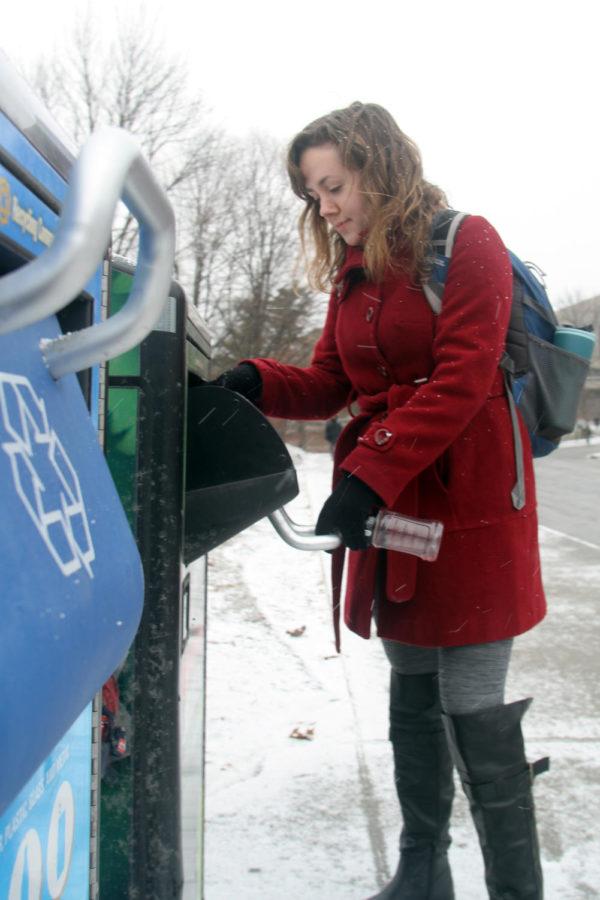ISU lacks fabric recycling program
Krista Johnson, senior in political science, utilizes the recycling compactors on campus, as well as the trash compactors available through out the university grounds.
March 5, 2017
As many good things the fashion industry may provide, it also brings unforeseen negative impacts on the environment. Iowa State, like many other programs in the United States, does not offer opportunities for the recycling of fabrics.
The effects of textile waste is not commonly thought about after disposal, but it has great impacts on the environment.
The United States generates about 25 billion pounds of textiles, including clothing, footwear, accessories, towels, bedding and drapery, per year. This averages to about 82 pounds per U.S. resident. Of the 25 billion pounds of textiles being produced, only about 15 percent gets donated or recycled.
The Environmental Protection Agency estimates that textile waste occupies nearly 5 percent of all landfill space. Above all, these numbers are continuing to rise in the United States.
When a piece of fabric decomposes, it releases methane, a harmful gas. There are also chemicals in the fabric and other clothing pieces that may be soaked into the soil, contaminating the surface and groundwater.
Not only is it bad for the environment chemically, but it takes up precious space in the landfill that should not be used for items that are recyclable.
Iowa State has a recycling program set up for many items including cardboard, batteries, light bulbs, glass, brown bottles and many more. But there is no program for recycling fabric or garments.
In the apparel, merchandising and design department, students have to buy their own fabric for projects. Therefore, they are responsible for the disposal of such fabrics.
“They typically toss the scrap fabric in the trash with other trash items, yet sometimes smaller pieces are placed in a bin where they are used as scraps to test the sewing machines in the lab prior to sewing,” said Christina Denekas, lecturer in apparel, events and hospitality management.
When Denekas was a student, she kept the garments she made but eventually threw them away once they were documented in her portfolio.
Current students either wear the garments they have made, toss the fabric or keep them to use for other projects.
“I wanted to wear the garments I made last semester, but they were made to fit the mannequins,” Fitzgerald said. “The mannequins aren’t matched up to my body.”
Anna Lickliter, senior in apparel, merchandising and design, used jeans from Goodwill and other thrift stores to make her senior line.
“All of the denim components of my line are actually derived from pairs of old jeans that I found at the Goodwill in Ames, and all I did was cut up the jeans and strategize a way to manipulate them to make a sheet of fabric that I could cut fabric pieces out of,” Lickliter said.
Sharon Wirth, the lab operator, allows students to store fabrics in the storage closets in the LeBaron hallways. Students are encouraged to be creative with their designs, so some recycle their excess fabrics for future projects.
With a rising need for recycling programs, Iowa State may recognize the requirement for a fabric recycling initiative.
“I think it would be a really cool and beneficial idea if we had some sort of fabric swap at the end or the beginning of every year so people would get the chance to get rid of old fabric that they have no use for anymore and find new fabric options for a cheaper price than what they could find in the store,” Lickliter said.







